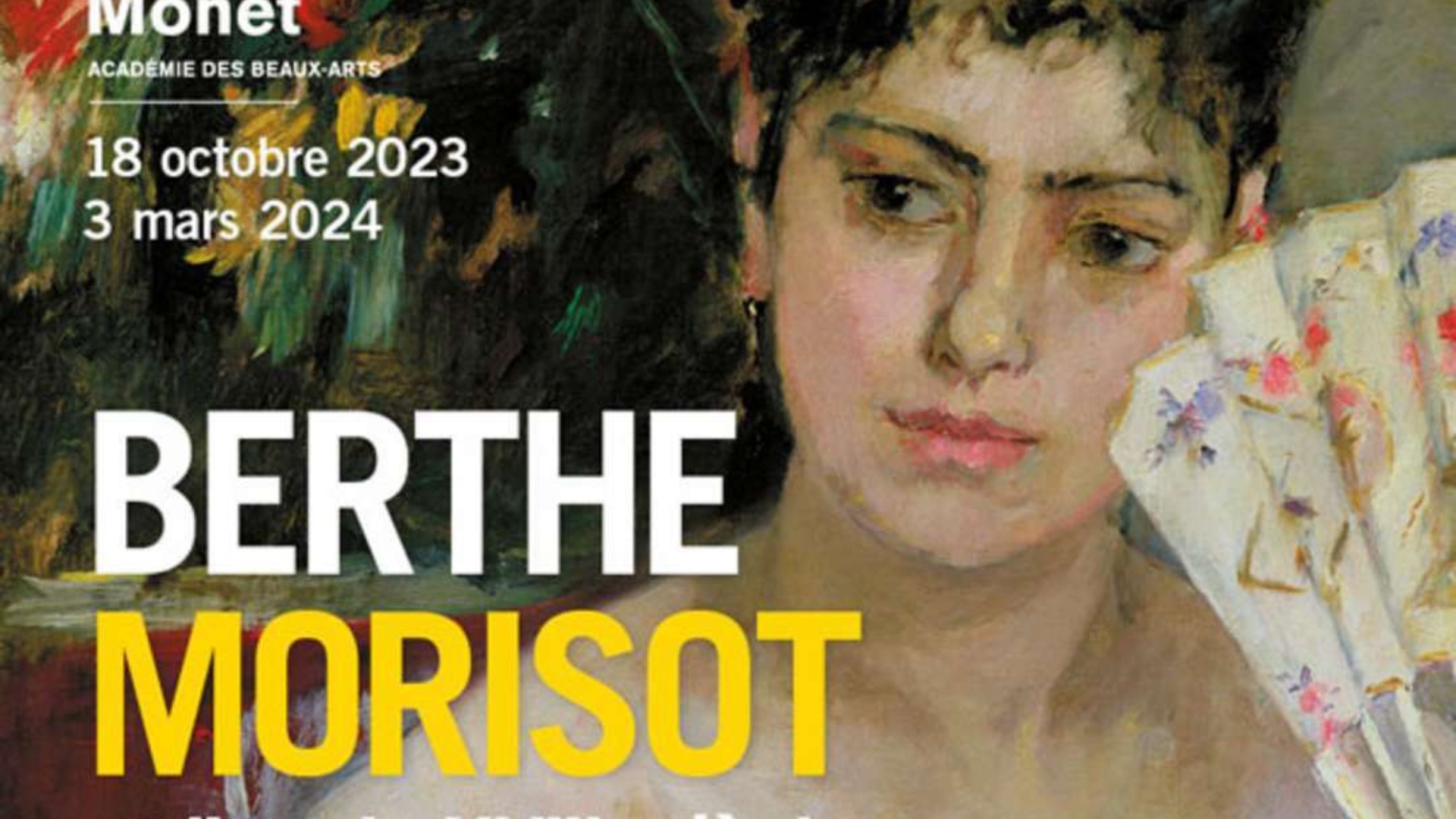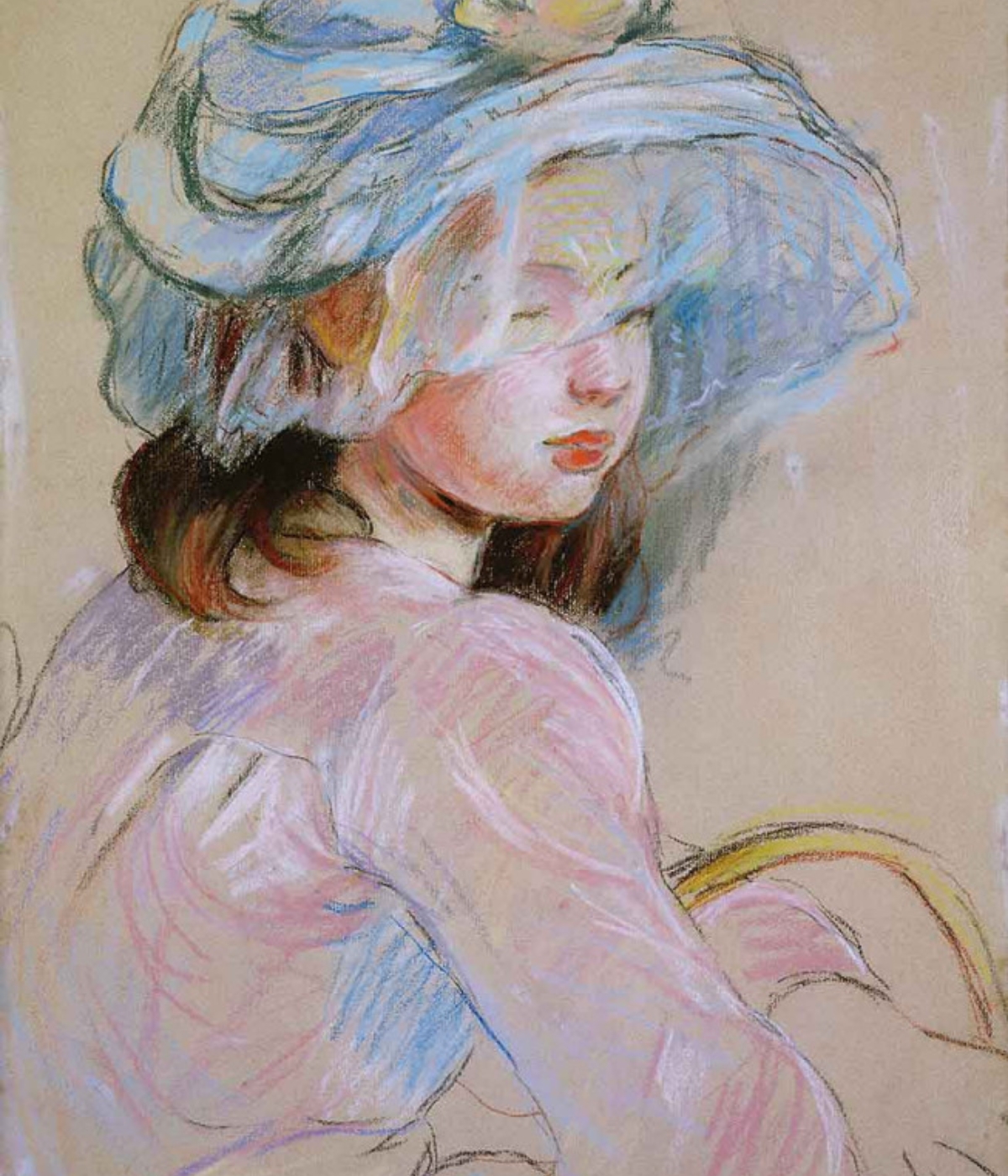Since the 2010s the art world has been interested in the paintings of Berthe Morisot. A welcome, but late recognition. While her male counterparts – Monet, Renoir, Pissaro, Cézanne, etc. – have been continually celebrated, and have found a place in our collective imagination, the name of Berthe Morisot remains little known to the general public. Like many talented artists who have played a decisive role in the great artistic movements of recent centuries, her only fault was being born a woman in a patriarchal society.
Becoming an independent painter in the 19th century
If the doors of the Fine Arts were closed to her because of her sex, Berthe Morisot had the privilege of being born, January 14, 1841, in an upper-class French family. She received extensive artistic training, taking watercolor lessons with her sisters. Their teacher, Joseph Guichard, is convinced that Berthe and Edma Morisot will become great painters. “In the midst of the great bourgeoisie that is yours, it will be a revolution, I would almost say a catastrophe. he writes. The exhibition “Berthe Morisot and eighteenth-century art” evokes these formative years. The artist grew up in a society that celebrates the art of the eighteenth century, in its furniture, in its objects of everyday use – we discover Berthe Morisot’s fans, which reproduce a gallant scene illustrated by Boucher – or in its centers of interest, like nature and the care entrusted to the play of light.

The Morisot sisters were soon entrusted to the painter Camille Corot, who introduced them to the science of colors and outdoor painting. Berthe abandons dark colors for a lighter palette. In 1864, the Morisot sisters presented their first paintings at the Salon de l’Académie des Beaux Arts. They meet at the Louvre copyistsas well as the painter Edouard Manet. The Morisots also welcomed into their home the cream of the intellectuals of the time: the Rieseners, the Manets, Baudelaire, Zola, Tissot… Regarding the pictorial talent of the Morisot sisters, Manet wrote to the painter Henri-Fantin Latour: “I agree with you, the Morisot ladies are charming, it’s a pity they aren’t men.
While Edma married in 1868 and ended her career as a painter, Berthe continued her work independently. He also posed for Manet, in 14 portraits. Edouard Manet and Berthe Morisot speak a complex professional and personal relationshipnot without a power dynamic and a form of desire. Manet excessively retouched some of the painter’s works, which greatly displeased the latter. Art critics noted their mutual influence in their work. In 1874, Berthe Morisot married Eugène Manet, Edouard’s brother and an ardent supporter of his wife’s work. He had a daughter, Julie, in 1878. Unlike her sister, she continued to paint and also kept her maiden name in the signature.
The impressionist turning point
At the same time, Cézanne, Monet, Renoir, Pissaro, Degas and Morisot founded the “Anonymous Society of Painters, Sculptors and Engravers”, with the aim ofexhibit their works outside the confines of the Salon, organized by the Academy of Fine Arts. Their first exhibition took place in Nadar’s former workshop: there we discovered 29 painters, including a woman, Berthe Morisot. The name “Impressionism” was given to this group of artists mockingly by the journalist Louis Leroy of Charivari, who mocked Monet’s masterpiece, “Impression, Rising Sun”. The impressionist movement is born.
![Copy of [Image de une] Horizontal – 2024-02-05T152507.702 Copy of [Image de une] Horizontal – 2024-02-05T152507.702](https://c0.lestechnophiles.com/www.madmoizelle.com/wp-content/uploads/2024/02/copie-de-image-de-une-horizontale-2024-02-05t152507702.jpg?resize=1920,1080&key=59f0b65c)
Berthe Morisot became an essential figure of this artistic avant-garde, participating in seven of the eight exhibitions organized by the Impressionists. She depicts women’s domestic life from her social environment. : their walks in the parks, and above all their intimacy, with paintings such as “Woman at the toilet” (1875-1880), which represents a woman from behind, with a bare neck. A painting made of delicate shades of gray and white, and clearly visible brush strokes, which Emile Zola describes as “true pearl”.
“The angel of the unfinished”, too soon forgotten
If the painter remains classic in her subjects, she is bold and innovative in her treatment. Turning the cliché of the female muse on its head, the husband becomes one of her models. The painting “Eugène Manet and his daughter in the garden of Bougival” (1881) represents a bucolic scene between a father and his daughter. It shows a pattern of fatherhood that was unprecedented for the time.
In the 1880s, the Louvre and other museums shone a spotlight on great 18th-century painters, such as Watteau, Boucher, and Fragonard. Inspired, Berthe Morisot launches into a version of Boucher’s painting “Apollo revealing her divinity to the shepherdess Issé” (1750), enlarging the two entwined nymphs.
“I don’t think there’s ever been a man who treated a woman as an equal, and that’s all I would have asked for. Because I know I’m worth it.” (Berthe Morisot)
From 1885, after discovering the pastel work Perronneau, he used pastels as much as oil for his paintings. He finds a freedom in the gesture and a surrender that leaves an impression of immediacy. His paintings brim with life, as if his subjects could leave the frame at any moment. Radical artist, Berthe Morisot has a weakness for the unfinished. Her paintings resemble sketches, as if to emphasize the primary creative impulse. But in his art everything is thought out, and in particular the framing of his paintings – figures from behind, off-screen, backlit… – almost photographic. She is nicknamed by critics “the angel of the unfinished”.

Berthe Morisot died in 1895 of influenza. He leaves behind an oeuvre of more than 400 paintings, but his death certificate reads “without profession”! Two years later, the Fine Arts opened its doors to women. The subtle invisibility of female artists by decision-makers in the art world is taking place: you have to wait almost 100 years so that the United States, then France, offer retrospectives (at the National Gallery of Arts in Washington, in 1987 and at the Palais des Beaux Arts in Lille, in 2002). In 2012 and 2019, the Marmottan and the Musée d’Orsay finally celebrate Berthe Morisot in Paris. The latest exhibition on the painter and her links with the eighteenth century has the merit of making us discover the artist from a different angle and placing her in an art history that has underestimated her for too long.
Do you like our articles? You’ll love our newsletters! Sign up for free on this page.
Source: Madmoizelle
Mary Crossley is an author at “The Fashion Vibes”. She is a seasoned journalist who is dedicated to delivering the latest news to her readers. With a keen sense of what’s important, Mary covers a wide range of topics, from politics to lifestyle and everything in between.




